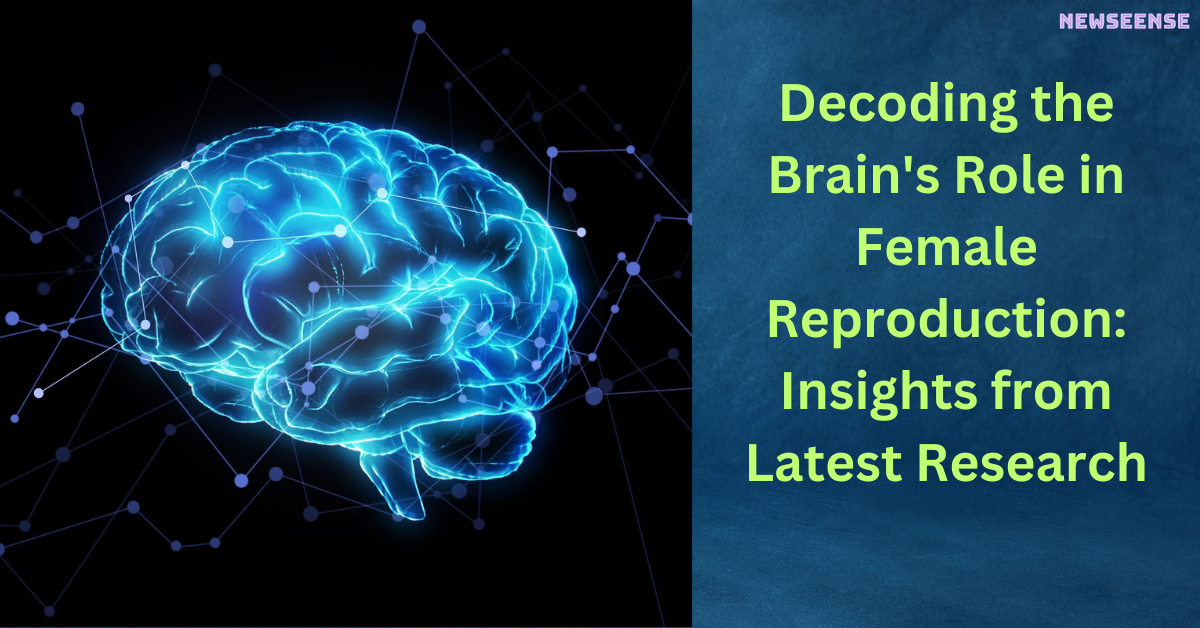Decoding the Brain’s Role in Female Reproduction: Insights from Latest Research

In a groundbreaking study, researchers from Nagoya University‘s Graduate School of Bioagricultural Sciences and Japan’s National Institute of Physiological Sciences have unraveled the intricate connection between specific neurons in the brain and the release of hormones governing ovarian function in females. The findings, published in the journal Scientific Reports, promise to deepen our understanding of reproductive processes in both animals and humans, potentially paving the way for advanced treatments.
Table of Contents

Neuronal Influence on Ovarian Function:
- Latest research highlights the role of a specific type of neuron in the brain in influencing hormone release, crucial for ovarian functions in females.
- Hormones control key aspects such as follicular development and ovulation, essential for reproduction in mammals, including humans.
Kisspeptin Neurons and Hormonal Regulation:
- Kisspeptin neurons in the brain play a pivotal role in regulating the release of hypothalamic gonadotropin-releasing hormone (GnRH) and pituitary follicle-stimulating hormone/luteinizing hormone (LH).
- These hormones stimulate essential reproductive functions, including follicular development and ovulation.
Brain Regions and Reproductive Processes:
- Two main brain areas, the arcuate nucleus (ARC) and the anteroventral periventricular nucleus (AVPV), are identified as key players in the reproductive process.
- ARC maintains regular rhythmic secretion of GnRH/LH, while AVPV triggers a surge leading to ovulation.
Role of Dynorphin in Kisspeptin Neurons
- Kisspeptin neurons in the ARC produce and respond to dynorphin, an inhibitory substance.
- Genetically modified rats with deleted Kiss1 in dynorphin receptor-expressing cells displayed altered reproductive patterns, emphasizing the importance of dynorphin in the regulation of kisspeptin neurons.
Implications for Female Rat Reproduction
- Results from the study indicate that kisspeptin neurons with dynorphin receptors are crucial for normal female rat reproduction.
- Proper hormone secretion and ovulation are facilitated by these neurons, as demonstrated by genetically modified rats with altered kisspeptin production.
Future Directions and Applications:
- Researchers express excitement about delving into the molecular mechanisms controlling kisspeptin neuronal activity.
- The findings hold promise for understanding the central mechanism of reproduction and may find applications in treating ovarian disorders in livestock and infertility in humans.
Conclusion
This research not only sheds light on the intricate interplay between brain neurons and hormonal regulation but also opens new avenues for advancing reproductive treatments. By deciphering the role of kisspeptin neurons and dynorphin in female rat reproduction, scientists are one step closer to unraveling the mysteries of the brain’s influence on reproductive processes, offering hope for future breakthroughs in both animal and human fertility treatments.
- BJP President JP Nadda Issues Notice to Dilip Ghosh Over Controversial Remarks on Mamata Banerjee
- Ram Charan and Kiara Advani’s ‘Jaragandi’ Song from Game Changer Released
- Pre-Match Banter: Rohit Sharma’s Flying Kiss Recreation Adds Spice to MI vs SRH Clash
- Swami Smaranananda Maharaj, President of Ramakrishna Math and Ramakrishna Mission, Passes Away at 95
- Stand-up Comedian Munawar Faruqui Breaks Silence on Social Media After Mumbai Police Detention






2 Comments